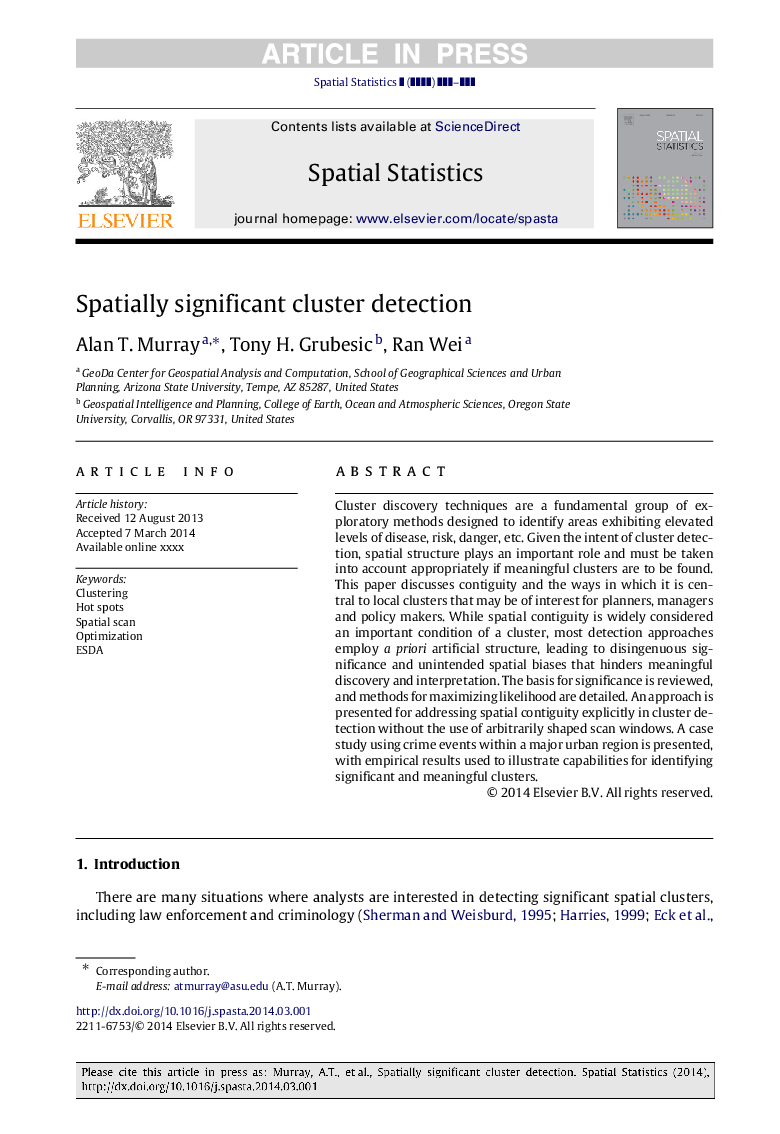| Article ID | Journal | Published Year | Pages | File Type |
|---|---|---|---|---|
| 7496659 | Spatial Statistics | 2014 | 14 Pages |
Abstract
Cluster discovery techniques are a fundamental group of exploratory methods designed to identify areas exhibiting elevated levels of disease, risk, danger, etc. Given the intent of cluster detection, spatial structure plays an important role and must be taken into account appropriately if meaningful clusters are to be found. This paper discusses contiguity and the ways in which it is central to local clusters that may be of interest for planners, managers and policy makers. While spatial contiguity is widely considered an important condition of a cluster, most detection approaches employ a priori artificial structure, leading to disingenuous significance and unintended spatial biases that hinders meaningful discovery and interpretation. The basis for significance is reviewed, and methods for maximizing likelihood are detailed. An approach is presented for addressing spatial contiguity explicitly in cluster detection without the use of arbitrarily shaped scan windows. A case study using crime events within a major urban region is presented, with empirical results used to illustrate capabilities for identifying significant and meaningful clusters.
Keywords
Related Topics
Physical Sciences and Engineering
Earth and Planetary Sciences
Earth and Planetary Sciences (General)
Authors
Alan T. Murray, Tony H. Grubesic, Ran Wei,
